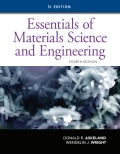
(a)
Interpretation:
The term "Quenching" needs to be explained.
Concept Introduction:
Quenching is one of the important concepts in material science and metallurgy. In quenching the fast cooling of workpiece takes place in order to obtain required material characteristics. In the cooling process, the cooling fluids used are water, air, oil. Quenching is the advantageous in case of low-temperature process like phase transformation.
(b)
Interpretation:
The term "Tempering" needs to be explained.
Concept Introduction:
To change the undesirable properties of steel as well as cast iron into desirable and commercially acceptable, various methods are used in which tampering is one of them, it is a heat treating, progress the toughness especially of iron-based alloys.
Tempering method is done by heating the metal to particular temperature, but the temperature must be below the critical point for a certain period of time.
(c)
Interpretation:
The term "retained austenite" needs to be explained.
Concept Introduction:
To change the undesirable properties of steel as well as cast iron into desirable and commercially acceptable, various methods are used in which retained austenite is one of them, In the retained austenite process, austenite that does not completely transform to martensite quenching.
This retained austenite microconstituent occurs when the steel is not quenched to a temperature low enough to form 100% martensite.
(d)
Interpretation:
The term "mar-quenching or "martempering" needs to be explained.
Concept Introduction:
Martempering is also called as interrupted quenching or stepped quenching. The steel above the transformation range or critical point is heated in this process.
In this method, the austenite is a transformed to martensite at stepped quenching, at a rate fast sufficient to avoid the formation of ferrite, bainite or pearlite.
Want to see the full answer?
Check out a sample textbook solution
Chapter 13 Solutions
Essentials of Materials Science and Engineering, SI Edition
- Find Vo using mesh analysisarrow_forwardThe resistance R and load effect S for a given failure mode are statistically independent random variables with marginal PDF's 1 fR (r) = 0≤r≤100 100' fs(s)=0.05e-0.05s (a) Determine the probability of failure by computing the probability content of the failure domain defined as {rarrow_forward1. The beam is supported by a roller constraint at B, which allows vertical displacement but resists axial load and moment. If the bar is subjected to the loading shown and constant El (L = 12 ft, E = 3100 ksi, I = 1728 in (rectangular section 12"x12"), w = 1 klf). Caution: pay attention to unit conversion between ft and in) x W B a. Sketch the deflected shape. L b. Determine the equations of the slope and the elastic curve using the coordinate x. First, solve this problem parametrically, and then substitute the numerical values for L, E, I, w at the end. There will be a significant penalty for solutions that do not calculate the slope and deflection as parametric functions. c. Specify the slope (in radians) at point A (parametrically and numerically). d. Specify the vertical displacement at point B (parametrically and numerically).arrow_forward4. EI is constant in the beam below (a = 12 ft, b = 5 ft, E = 29,000 ksi, I = 800 in¹ (W18x50), P = 2 kip): b Р C a. Sketch the deflected shape. b. Determine the equations of the slope and the elastic curve using the coordinates x1 and x2. c. For the AB segment, determine the maximum deflection and its location. Hint: at maximum deflection, the slope is zero. d. Specify the slope (in radians) and deflection at point C.arrow_forward3. EI is constant in the beam below (a = 10 ft, b = 5 ft, E = 29,000 ksi, I = 340 in (W14x34), Mo = 50 k. ft): Mo Mo a. Sketch the deflected shape. X2 b. Determine the equations of the slope and the elastic curve using the coordinates x1 and x2. Due to symmetry, only the left side is sufficient. Hint: symmetry requires the slope to be zero at mid span. c. Determine the maximum deflection. d. Specify the slope (in radians) at point A.arrow_forward2. EI is constant in the beam below (L = 10 ft, E = 29,000 ksi, I = 350 in (W12x45), W = 500 lb/ft): a. Sketch the deflected shape. b. Determine the equations of the slope and the elastic curve using the coordinates x1 and X2. c. Specify the slope (in radians) and deflection at point C. d. Specify the slope (in radians) at point B. -x- L 2 W C X27 L 22 Barrow_forwardPlease solve this problem as soon as possible My ID# 016948724arrow_forwardRead the paper of Khalili et al. (2004). Describe the issue raised by Jennings and Burland in using the single-value effective stress to quantify the problem of wetting-induced collapse. Use the discussion in Khalili et al. (2004) on the different ways that effective stress and yield stress change with suction to explain how wetting-induced collapse can be modeled with the single-valued effective stress. Comment on whether the soil tested by Jotisankasa (2003) would be collapsible based on the discussionarrow_forwardc) An RC circuit is given in Figure Q1.1, where Vi(t) and Vo(t) are the input and output voltages. (i) Derive the transfer function of the circuit. (ii) With a unit step change of Vi(t) applied to the circuit, derive the time response of Vo(t) with this step change. Vi(t) C₁ Vo(1) R₂ C2 C3 | R = 20 ΚΩ = 50 ΚΩ C=C2=C3=25 μF Figure Q1.1. RC circuit.arrow_forwardc) An RC circuit is given in Figure Q1. vi(t) and vo (t) are the input and output voltages. (i) Derive the transfer function of the circuit. (ii) With a unit step change vi(t) applied to the circuit, derive and sketch the time response of the circuit. R₁ R2 v₁(t) R3 C₁ v₁(t) R₁ = R₂ = 10 k R3 = 100 kn C₁ = 100 μF Figure Q1. RC circuit.arrow_forwardc) A RC circuit is given in Figure Q1.1. Vi(t) and Vo(t) are the input and output voltages. (i) Derive the transfer function of the circuit. (ii) With a unit step change of Vi(t) applied to the circuit, derive the time response of the circuit. C₁ C₂ Vi(t) Vo(1) R₁ C₂ R-25 k C=C2=50 µF Figure Q1.1. RC circuit.arrow_forwardAnswer 2 questions for 100 marks Question 1: Process Design [25 marks] An incomplete process design of a flash drum distillation unit is presented in Figure 1. The key variables to be controlled are flow rate, temperature, composition, pressure and liquid level in the drum. Disturbances are observed in the feed temperature and composition. Heat exchangers Drum Vapor Liquid Pump Figure 1: Incomplete process design of a distillation unit Answer the following questions briefly and in a qualitative fashion: a) Determine which sensors and final elements are required so that the important variables can be controlled. Sketch them in the figure using correct instrumentation tags. Describe briefly what instruments you will use and where they should be located. Reflect on the potential presence of a flow controller upstream of your process design (not shown in the diagram). How would this affect the level controller in the drum? b) [10 marks] Describe briefly how you qualitatively determine the…arrow_forwardarrow_back_iosSEE MORE QUESTIONSarrow_forward_ios
 MATLAB: An Introduction with ApplicationsEngineeringISBN:9781119256830Author:Amos GilatPublisher:John Wiley & Sons Inc
MATLAB: An Introduction with ApplicationsEngineeringISBN:9781119256830Author:Amos GilatPublisher:John Wiley & Sons Inc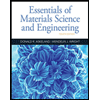 Essentials Of Materials Science And EngineeringEngineeringISBN:9781337385497Author:WRIGHT, Wendelin J.Publisher:Cengage,
Essentials Of Materials Science And EngineeringEngineeringISBN:9781337385497Author:WRIGHT, Wendelin J.Publisher:Cengage, Industrial Motor ControlEngineeringISBN:9781133691808Author:Stephen HermanPublisher:Cengage Learning
Industrial Motor ControlEngineeringISBN:9781133691808Author:Stephen HermanPublisher:Cengage Learning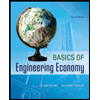 Basics Of Engineering EconomyEngineeringISBN:9780073376356Author:Leland Blank, Anthony TarquinPublisher:MCGRAW-HILL HIGHER EDUCATION
Basics Of Engineering EconomyEngineeringISBN:9780073376356Author:Leland Blank, Anthony TarquinPublisher:MCGRAW-HILL HIGHER EDUCATION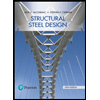 Structural Steel Design (6th Edition)EngineeringISBN:9780134589657Author:Jack C. McCormac, Stephen F. CsernakPublisher:PEARSON
Structural Steel Design (6th Edition)EngineeringISBN:9780134589657Author:Jack C. McCormac, Stephen F. CsernakPublisher:PEARSON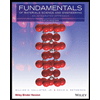 Fundamentals of Materials Science and Engineering...EngineeringISBN:9781119175483Author:William D. Callister Jr., David G. RethwischPublisher:WILEY
Fundamentals of Materials Science and Engineering...EngineeringISBN:9781119175483Author:William D. Callister Jr., David G. RethwischPublisher:WILEY





